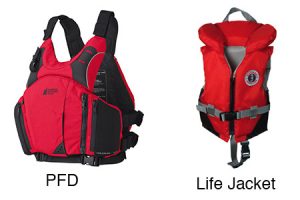Summer is the perfect time to enjoy our country’s beautiful lakes and waterways. But when boarding a boat, stepping into a canoe or doing any other activity in the water, safety needs to be at the forefront of your mind.
Safe Boating Awareness Week, which takes place this year from May 22 to 28, aims to spread this message. In particular, one of the central objectives of the campaign is to publicize the importance of wearing a properly fitted and fastened lifejacket or personal flotation device (PFD) when on the water.
Though both lifejackets and PFDs make their wearers more buoyant, the devices fit and function differently. Before choosing which one to wear on the water, you need to assess which is more suitable.
LIFEJACKETS are more buoyant than PFDs, with the bulk of the buoyancy located in the front part of the vest. If an unconscious person wearing a lifejacket lies facedown in the water, he or she will be rotated so that they face upwards. Lifejackets come in two standard sizes, one for children (or people under 90 pounds) and one for adults. They’re generally the best option for young children and weak swimmers.
PERSONAL FLOTATION DEVICES (PFD) is less buoyant than a lifejacket, and the bulk of the buoyancy is placed at the back of the vest. PFDs are more comfortable and allow for greater mobility than lifejackets (making them ideal for water sports). However, in certain contexts, they’re not as safe — PFDs are designed to keep a conscious person afloat only in calm conditions. A person should therefore feel confident in the water before opting for a PFD in place of a lifejacket.

Wearing a lifejacket or PFD when you’re on the water is hugely important. But it’s only one part of boating safety. For more information on how to stay safe on the water, visit the Canadian Safe Boating Council website at csbc.ca.
